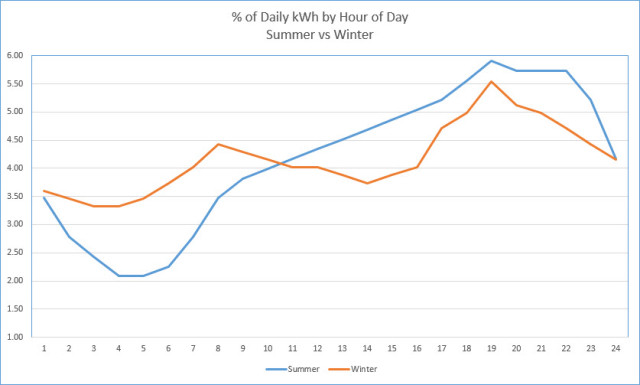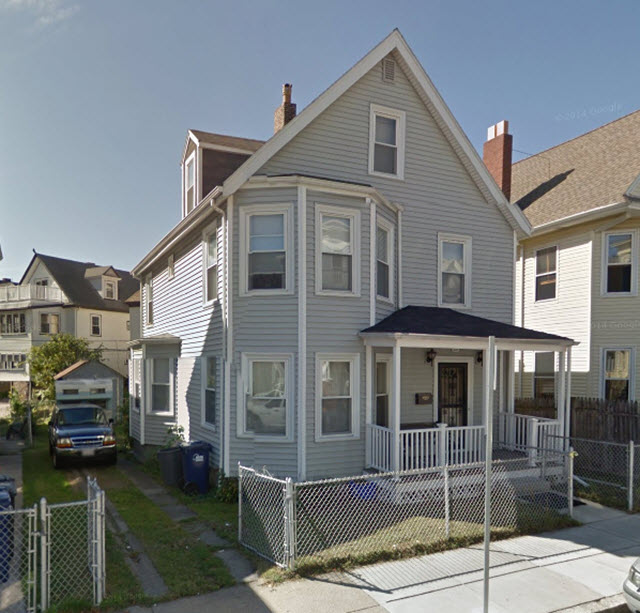

Innovation comes at a cost. One of the hopes in energy innovation is that there will eventually be a financial benefit. The Tesla battery is no different.
When you watch Elon Musk present the Powerwall, you’ll find that he focuses on the environmental benefits for all of us. That’s great. He does also talk a bit about how it could save you money. But how much money will it really save you?
That’s our focus today. Let’s look at the numbers to see if it will save you money and how long until it could pay for itself. This will take us on a journey into a little math. Don’t worry, the math will be done for you. We’re mostly going to look at what the numbers mean.
The idea that Musk puts forth is that the Powerwall will charge up during hours of the day when most people are using less electricity. This is known as non-peak hours. During those hours, electricity is cheaper to buy. Those hours when most people are using lots of electricity are peak hours. Peak-hour electricity is more expensive.

It’s a real-world example of the economic principle of supply versus demand that applies to many, but not all, commodities. When the demand is low and the supply is high, things get cheaper. Of course, when demand is high and the supply is low, things get more expensive.
So if you’re buying electricity at a lower price, storing it in the Powerwall, and then using it when electricity is more expensive, you’re saving money, right? We’ll see.
It’s important to note that to make use of time of use (TOU) pricing, your home needs to have a smart meter installed.

Normally, your electricity provider pays for this, so it won’t cost you out of pocket. If you cannot get a smart meter in your area, it might be time to look at going solar.
Figuring out how an investment like this will save you money may seem simple. But it’s not. Your situation may be completely different than anyone else. Where you live, number of people in your house, what appliances you have…those are just a few of the many variables. So let’s pick one situation and work with that. Adjust the calculations for your situation.
Let’s look at an an average house. Really, there is no average house, so let’s go with the same one we used in The Oil Killers: When Google’s Data Meets Tesla’s Visions and MIT’s Brains. We’re also going to treat the home as not already having a smart meter installed.

This 1,600 sq.ft. home uses about 7,400 kilowatt hours per year (kWh/yr). It’s in a four-season area with the kind of summers and winters you’d expect in the northeastern US. Last year, the cost of electricity averaged about 15 cents/kWh. Therefore, the yearly bill was $1,110.
7,400 kWh/yr x $0.15/kWh = $1,110/yr
That’s the number to beat. Installing the Powerwall will have to lower that number in a reasonable amount of time. Otherwise, is it worth it?
The next thing we need to look at is the capital expenditure. That is, how much you have to spend to get the system into place. An easy calculation, right? How much does a Powerwall cost?
Obviously, you’ve got to buy the Powerwall. Currently, it’s listed at $3,000 each for the 7kWh model. This home uses an average of 20 kWh per day.
7,400 kWh ÷ 365 days = 20 kWh/day
Let’s assume that during the peak hours we’ll use about half of that. That’s 10 kWh. So you’ll need at least 2 Powerwalls for 14 kWh. That should cover the peak hours of the day. There’s $6,000 spent.

You’ll also need a AC-DC inverter. Batteries work on direct current (DC), North America’s power grid is alternating current (AC). For the two of them to work together, you need the inverter. DC goes in one side, AC comes out the other, and vice versa. It also needs to be a grid tie-in inverter.
It has to be a grid tie-in inverter to prevent it putting electricity back into the grid. Why? Picture a power outage near your home. A power line technician comes to fix it, thinking there’s no electricity there. But your Powerwall has electricity and is feeding it out to the grid. That’s how it works. If it doesn’t have power coming in, it’s putting it’s power out. It may go right out of your house and into the power lines. He’s in for a nasty, possibly life threatening, surprise. So your power provider will require the grid-tie-in inverter.
The inverter needed for a Powerwall is about $2,000. Because it isn’t a plug-and-go installation, you’ll require a licensed electrician to install it.

There are far too many variables to know exactly what installation will cost. Let’s keep it simple at 6 hours to install and say the electrician charges $50/hour. Let’s also pretend that the electrician needs no extra parts. So, that’s another $300. Expect to pay more though.
$6,000 for Powerwalls + $2,000 for Inverter + $300 for Electrician = $8,300
$8,300 – that’s the number to beat. Now you need to figure out how much it will save you and contrast that with what you’ve invested. That will tell you if it will save you money. If so, how much and how long it will take to pay for itself?
First, you need to know how much you are spending on electricity now. That should be fairly easy to figure out. The power company lets you know frequently in the form of a bill. If possible, gather the last 12 months worth of bills. The power bill should show you a few key things. You’ll need to write these down:
The rest of the bill is service charges, taxes, and goodness knows what. Having a Powerwall isn’t going to change those.
Using a spreadsheet here would make your life a bit easier. If you’ve never done so before, this is a good chance to learn to use spreadsheets. Once you learn to use them, you’ll be hooked.
Your spreadsheet will look something like this:

Next you need to compare that to what you’ll expect to spend for electricity in the future, now that you have the Powerwall. This is a bit more difficult to calculate.
The trick here is knowing what the time of use (TOU) cost of electricity will be in your area.
For our purposes, the best we can do is estimate. For this article, we’ll use data from Ontario Energy Board (OEB), of Ontario, Canada. Why? Because Ontario has had smart meters and time of use pricing for the home owner longer than anywhere else in North America.
The OEB breaks down a 24-hour day into 6 peak hours, 6 mid-peak hours, and 12 non-peak hours. The timing of the peak and mid-peak hours changes from summer to winter, but the non-peak doesn’t.

So when does summer end and winter begin? The OEB calls winter November 1st to April 30th and summer is May 1st to October 31st. That fits roughly with our current usage pattern for our example home. It will vary depending where you live.
The OEB rates for last year break down as follows. The summer rates were 16.1 cents/kWh for peak, 12.2 cents for mid-peak, and 7.32 cents for non peak. The winter rates were 17.5 cents/kWh for peak, 12.8 cents for mid-peak, and 7.68 cents for non peak.

To get a really accurate calculation, you’d need to know exactly what your energy usage is during each daily period. Without hourly data from a smart reader, you cannot know. We made some calculations based on the report, Time of Use Rates in Ontario, created by Navigant for the OEB. A typical day ends up looking like this:

In the chart above, green areas represent non-peak hours, yellow areas represent mid-peak hours, and red areas represent peak hours.
Take a minute to look at the chart and make sure you understand what’s going on.
For each month of the year, multiply the daily average kWh by the percentage of kWh/day for each hour of the day. That will give you how many kWh you might use for each hour of the day for that month.
Average kWh/day x % of kWh/day for the hour of the day = kWh/h
To get the energy cost for that hour of the day in that month, multiply the kWh/h by the TOU $/kWh for each hour of the day.
kWh/h x TOU $/kWh = $/h
Then you can add together the energy cost for each hour of the day and figure out your energy cost for the entire day. Multiply that by the number of days in the month, and you get a good idea what your energy cost would be for that month under TOU pricing.
SUM($/h) * Days in Month = Monthly Energy Cost Under TOU Pricing
If you do all this in a spreadsheet, it ends up looking something like this:

At a glance, you can see that switching to TOU pricing should start to save you money right away. You should go from $1,110 per year down to $827, saving you $209 per year. So the Powerwall will save you even more, right?
Let’s assume that your 2 Powerwalls will meet your peak-rate usage every day, and charge up strictly on the non-peak hours. That’s not exactly the case, but it’ll do for now.
We’re also going to assume that the Powerwall and the inverter are 100% efficient at charging and discharging energy. They aren’t, but it makes for a more complicated calculation. Each time electricity passes in to, or out of, the Powerwall or the inverter, there is energy lost.
The chart below shows how much energy you’re shifting from peak to non-peak hours. It also shows you the cost difference per day, per month, and per year. It’s not very encouraging.

Doing a complete energy shift only saves you about $89 per year.
Let’s look at the Powerwall’s real efficiency now. The Powerwall has an efficiency of 92%. The inverter’s efficiency is about 93% and the charging part’s efficiency is 85%.
System Efficiency = (Powerwall Efficiency x Inverter Efficiency x Charger Efficiency) x 100
System Efficiency = (0.92 x 0.93 x 0.85) x 100 = 73%
So at best, we’ll save 73% of that $89 per year or about $65.
Add that to the savings from switching to TOU billing and you save $274 per year.
$209/yr TOU Savings + $65/yr Powerwall Savings = $274/yr
That’s not very encouraging. You’ve got an $8,300 investment in this. It will take almost 38 years to earn back that.
Tesla says the Powerwall will last 10 years. That’s based on it only being drained by 50% and then recharged completely every day. That tells you that in this scenario, the Powerwall will never pay for itself. We’re not the only ones that think so.
There have been a lot of assumptions made in this exercise, but not so many as to cloud the issue. Building in the specific numbers for efficiency, energy costs, energy consumption, and everything else we’ve glossed over, there’s no way you’re going to save $830 per year. That’s what it would take for the Powerwall to pay for itself in 10 years.
Like any technology, the idea at first is always greater than the reality. If you go completely off-grid, the Powerwall makes sense. Perhaps that will encourage more people to go off-grid.
Electricity costs will continue to rise, and battery prices will continue to fall. There may be a point where having a Powerwall just to get over peak-hour costs will make sense.

When that time comes, our collective culture should be more open to the Powerwall. It will have been around for a decade or more, so we’ll think it’s commonplace and be more likely to adopt it. That’s what’s happening with electric cars right now.
Elon Musk has a vision. His team has a vision. They’re all pretty smart people. The vision is good and one that will eventually benefit us all. In that light, the Powerwall is a good step. Even if it isn’t putting money in our pockets today.
The simplest thing you can do is reduce the amount of electricity that you use. Getting an energy audit of your home can help you identify things you can do to save money. Often, these energy audits are partly, or completely, subsidized by government initiatives.
Sometimes, you can even get a rebate on making the improvements they suggest. That could be putting in better insulation, changing to LED lightbulbs, moving from baseboard heaters to a mini split ductless air conditioning and heating system, and many other options.

Changing from manual thermostats and electrical controls to new smart devices can save you money. Partly by turning things off automatically when not needed, and partly by showing you your energy usage patterns. Used properly, you could cut your heating bill in half with the Nest thermostat alone.

You could also save thousands by building a few alternative energy DIY projects. They’re inexpensive to make. They’re also simple enough for the first time DIY’er to make.
Of course, there’s always the option of going solar. You may not have to go off the grid completely, but innovations like Google’s Project Sunroof make going solar a lot easier. You might even be able to make use of some affordable solar system leasing programs. You can also start small with solar powered devices around the home.

Ultimately, the best way to save money on electricity, and energy in general, is to do a combination of all these things. That’s a lot to imagine! But simple patience and persistence can get you there faster than you might think.
Image Credits: OEB Time of Use Historical Pricing, Two Peak Seasons, via Ontario Energy Board, MagnaSine Magnum Inverter Charger, Smart Meter, via Flickr, Check Thickness of Insulation, via Shutterstock




 5 Questions You Should Ask Yourself Before Buying a New Tablet
5 Questions You Should Ask Yourself Before Buying a New Tablet Final Fantasy 13-2 Walkthrough
Final Fantasy 13-2 Walkthrough Pikmin 3 Review: Big Strategy with Tiny Characters
Pikmin 3 Review: Big Strategy with Tiny Characters Destiny - Kaliks Reborn Strategy
Destiny - Kaliks Reborn Strategy Just Cause 3 All Di Ravello Audio Tape / Diary locations
Just Cause 3 All Di Ravello Audio Tape / Diary locations